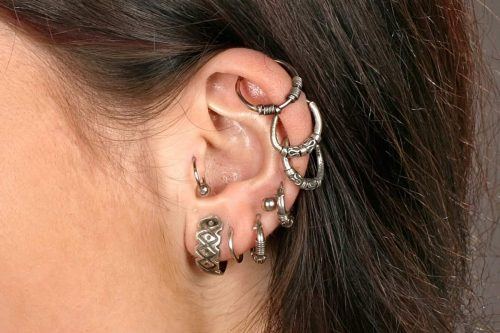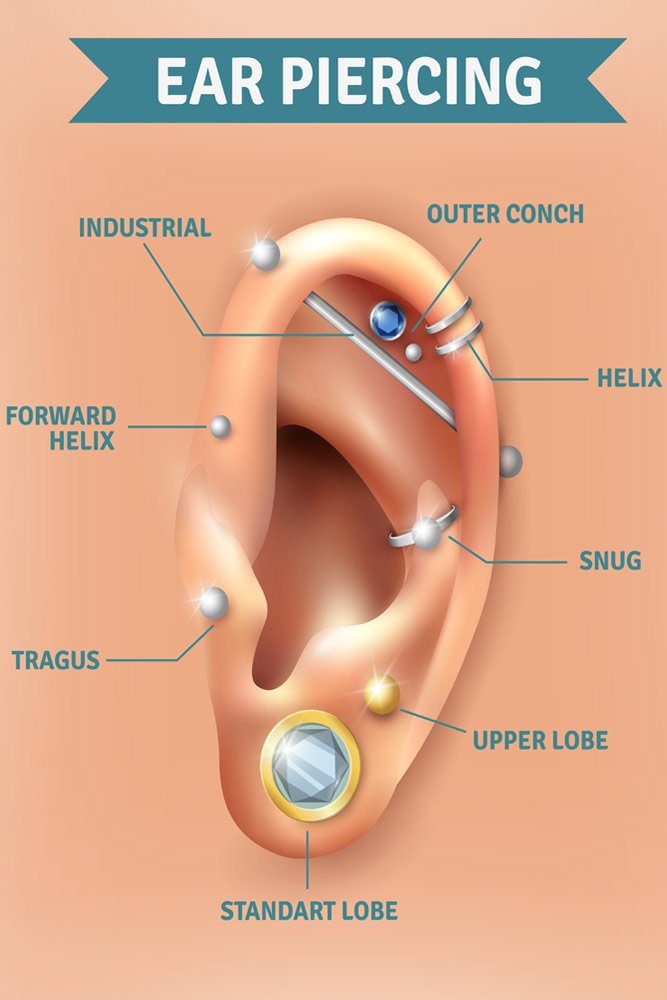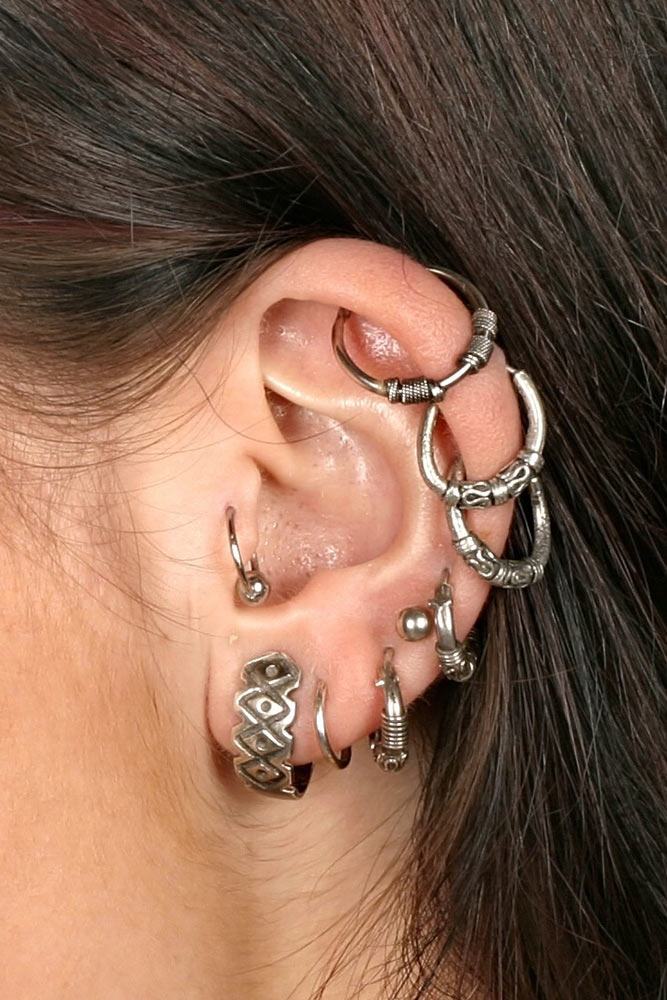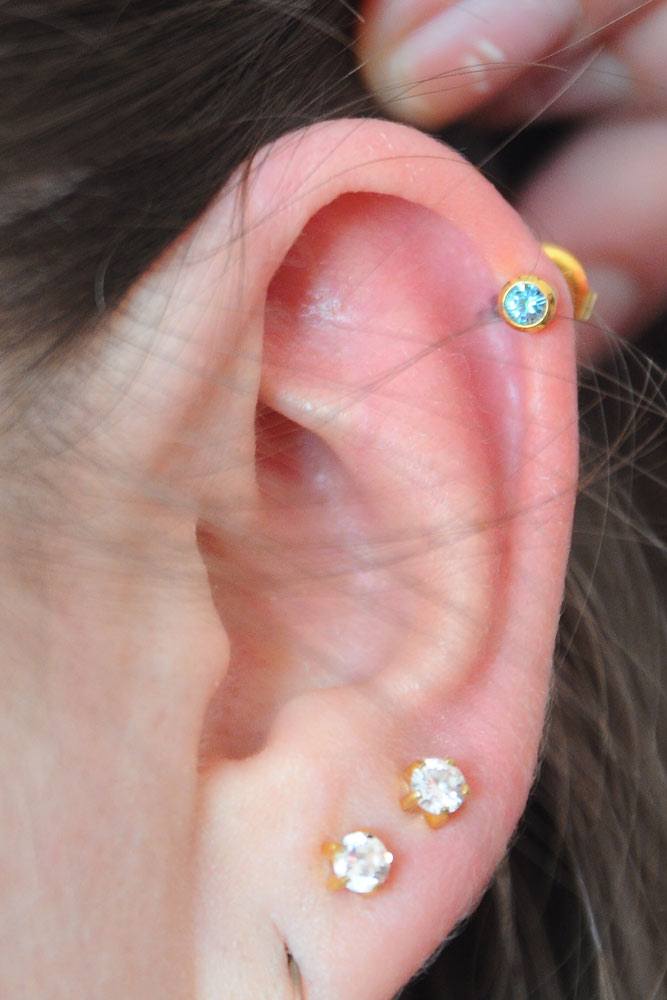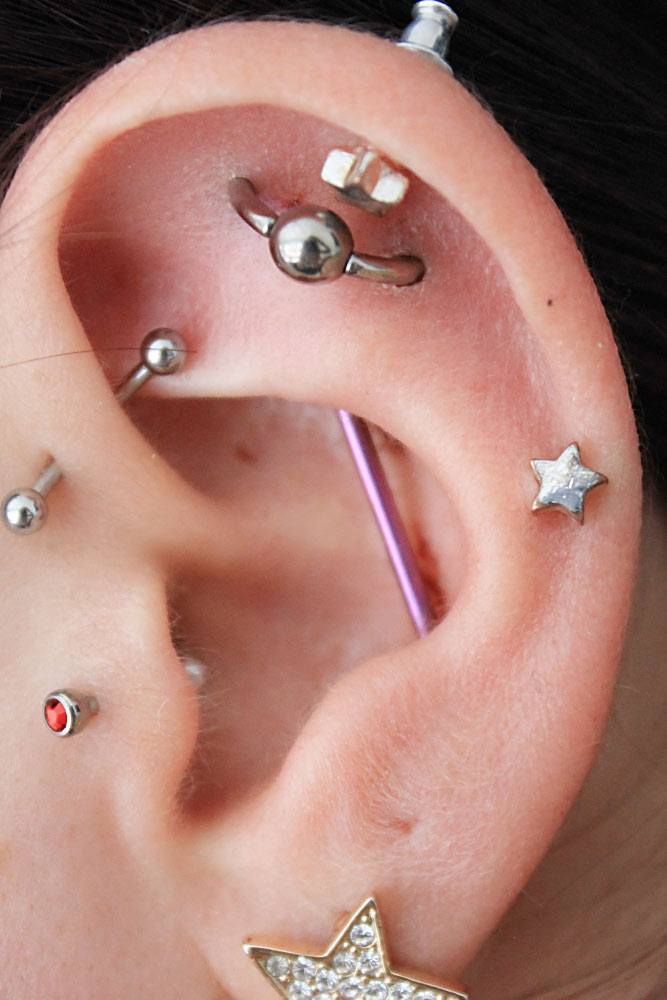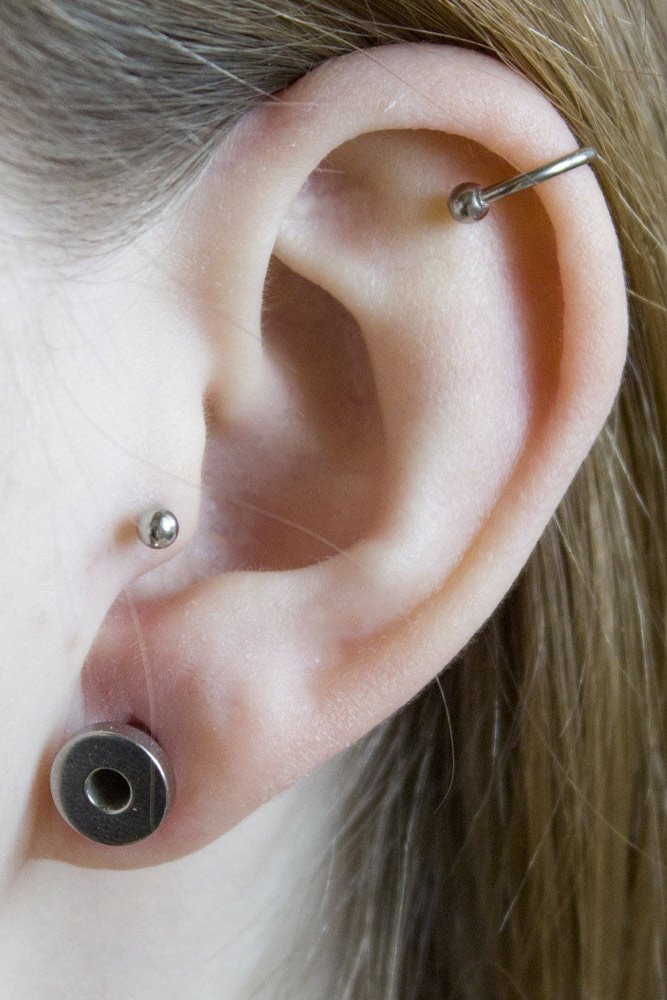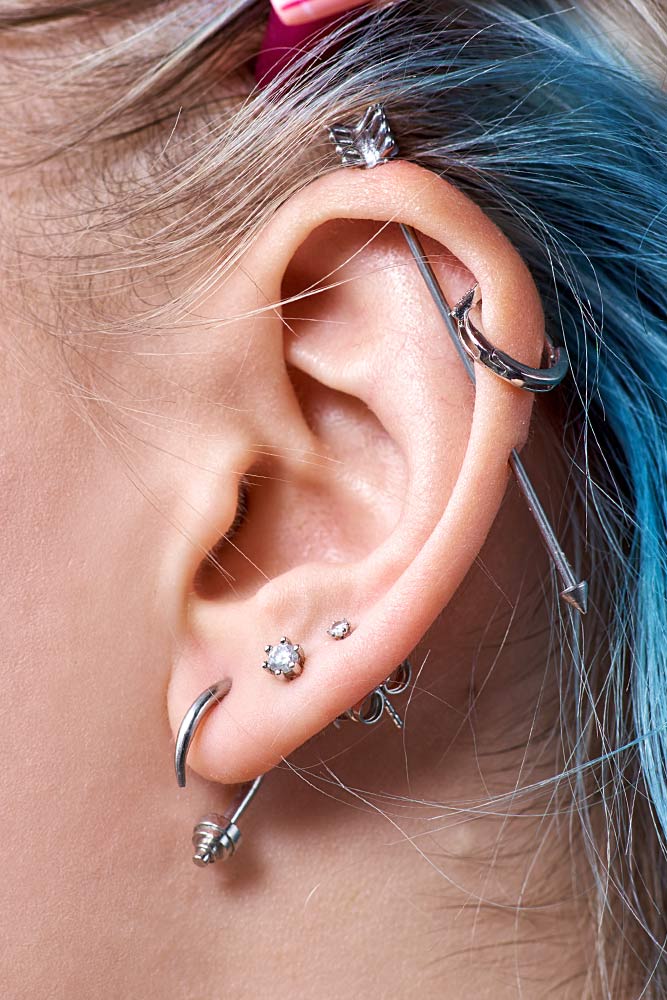Helix piercing has been around for a while now. However, unlike most trends, it is gaining more popularity day after day instead of losing it. Yet, many people are still hesitant whether to get their cartilage pierced or not. Some are afraid of pain, others a reluctant because consider aftercare too tiresome. If you are one of those people, we will help you to make the right decision. In the guide below, we have broken down all the information you should know about helix piercing, from how painful it is to healing tips and jewelry ideas. So, feel free to make good use of it.
What Is A Helix Piercing?
So, what is a helix piercing in the first place? This is a kind of ear piercing where instead of a lobe you get the outside part of your cartilage pierced. That is why it is also often referred to as a cartilage piercing. Depending on the location, its variations also include double helix piercing, triple helix piercing, forward helix piercing and snug piercing, also known as anti helix piercing.
Pain And Healing Time
Many consider helix piercing pain insufferable, thus depriving themselves of this fun way of self expression. If you share this opinion, we have good news for you. While piercing helix indeed hurts more than your lobe, after all, it is your body being punctured with a needle, it is not that bad. However, keep in mind that there are many factors that affect how much cartilage piercing is going to hurt with your pain threshold being the most contributing. Also, it really matters how skillful and experienced the person piercing you is. If you rate it on the scale of pain, that would be between 4 and 7. Though, once you get it, there is a big chance you are going to want another one, as it fully pays with the cool and stylish appearance you obtain with it.
As for helix piercing healing time, it may vary. But on average, it takes from 3 to 6 months, while in individual cases, your helix may need around 12 months to heal completely. Mind, however, so that your helix ear piercing heals as fast as possible without any negative consequences, you need to take proper care of it during the healing process. Otherwise, not only will this stage last much longer, but it may require another try. So, you will have to get back where you started.
How To Care For Helix Piercing?
As you obviously do not want to end up with an infected helix piercing, follow these simple yet effective cartilage piercing aftercare tips:
- Clean with care. So your piercing heals fast and successfully, it should be soaked in saline solution or rinsed in a salt bath a couple of times daily. Soak a cotton pad in saline and press it gently against the pierced area. Leave for up to five mins and pat dry afterward.
- Maintain a dry environment. If the pierced area remains damp, it may draw bacteria. As a result, your piercing becomes infected and you end up with scar bumps. In some cases, they may disappear without extra help. But most of the time, they require surgical intervention.
- Keep the jewelry intact. If your helix piercing earrings often or drastically shift, the skin around them may get damaged, which often results in helix bumps. So, try not to move the jewelry until the piercings heal completely. Studs are a great option to start with, as they allow for minimal movement.
- Buy a new pillow. Unless you are completely sure that your current pillow is absolutely clean, it is better to buy a new one. Pillows tend to accumulate dead skin cells, bacteria and other pollutants, which are not the best company for your freshly pierced cartilage. So, it pays to purchase a new pillow and make sure it has a clean pillowcase every night.
The Cost of Helix Piercing
Helix piercing cost ranges from $30 to $75 and depends on many factors. The location of the studio, the level of experience of the piercing artist, the jewelry type and its material, to name a few. Though, we do not recommend skimping on the piercer’s professionalism or the quality of the earring. You know what they say: miser pays twice.
Helix Jewelry
Helix piercing jewelry is extremely versatile. So, you will be able to match a piercing earring style to your taste and preferences. Here are the most popular helix piercing earring styles for your inspiration:
- If you lean toward something low key yet tasteful, then a classic helix stud is your way to go. It is pretty, neat and appropriate for any occasion. So, you may not worry that it will not suit any of your outfits. Besides, you are free to choose gemstones, charms or ball back to give your cartilage stud an individual touch.
- CBR or a captive bead ring. A small hoop adorned with a bead looks eye catching and charming. Besides, the range of available options allows for a plethora of amazing combinations. The material of the hoop may vary from stainless steel to silver and gold. Beads, in their turn, may either match the hoop or complement it, made of amber, pearls or opal.
- A cartilage hoop, as well as a segment ring and a clicker, is not only the most popular piercing earring style but also the most practical in most cases. It is stylish, aesthetically pleasing and easy to put into the ear. Because of their minimalistic look, they are a great option if you have several piercings in your ear, such as triple forward helix piercing, for example.
- A circular or curved barbell. Barbells pair nicely with a bead earring. So, if beads are your earrings of choice, it is a good idea to complement them with a barbell.
- A cuff. Those who prefer bolder and thicker erring styles than hoops but still want to retain their aesthetic should take a closer look at cuffs.
- A shield. To really stand out in the crowd, consider adorning your ear with a cartilage shield. As it covers your ear to a great extent, it looks unbelievably daring and stylish.
Jewelry Materials For Helix Piercing
There are several types of material piercing earrings are usually made of, as follows:
- Stainless steel. Considered the best option for helix piercing because of its inertia. Hence, your body is unlikely to negatively react to it.
- Surgical steel. Another great choice thanks to the variety of styles and shades it offers. One downside that it has though is the fact that it contains nickel, which can be quite a powerful allergen.
- A great alternative to stainless steel, as it is also high quality and offers a wide range of style and color options. Yet, it is nickel free, thus not causing allergies.
- If you fancy precious metals, then gold earrings may be quite a good idea, especially if your other jewelry is made of it too. However, opt for pieces that are 14 karats and above, as everything that is under 14K is going to be overly soft.
Side Effects
If following our recommendations, no side effects should bother you. However, it still makes sense to be aware of them.
- When you neglect the proper post piercing care, it may get infected. So, in case you notice that it has become swollen, tender and red with yellow or green pus, then do not hesitate to ask for medical aid.
- After treating a helix piercing infection, you may notice scars and bumps near the pierced area.
- In some cases, your skin recovers so that there is a raised scar surrounding the piercing area. While it looks not very flattering, it should not cause inconvenience.
Helix Piercing FAQs:
How painful are helix piercings?
Because helix piercings require puncturing the cartilage, it may be more painful than other ear piercing types. Though, the pain is quite tolerable.
How long does helix piercing heal?
On average, helix piercings should heal completely in six months. Yet, there is always a risk to extend this period in the case of infection as a result of improper care.
Is a helix piercing dangerous?
Provided it is performed correctly, there is nothing dangerous about cartilage piercing. Yet, you may sometimes face noticeable scars or even more serious consequences, such as a cauliflower ear.
Now that you have our detailed guide, you should not have any more questions or doubts regarding helix piercing. As you can tell, there is nothing to be afraid of. You just need to be patient a little and take care of it properly. The result though is worth the effort fully, as you are guaranteed a ton of admiring gazes and compliments.
Was this article helpful?



